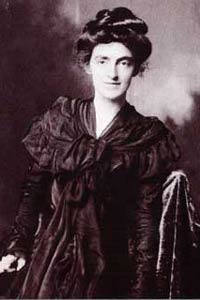Law School celebrating ‘century of ideas, action’
By Peter SchulerNews Office
 Left to right are three University Law School deans: the first Dean of the Law School, Joseph Beale, was appointed in 1902; Edward Levi, who also served as the University’s eighth President, was appointed Dean of the Law School in 1950; and Saul Levmore, current Dean of the Law School, was appointed in 2001. |
Levmore is now leading a $100 million capital campaign and has met this year with many of the Law School’s 8,500 alumni in the United States and overseas. The Law School is celebrating its centennial with numerous lectures, dinners and other events, under the banner of “A Century of Ideas and Action.”
Compared to most of its peers in the top ranks of U.S. law schools, it is still a very intimate institution, with a relatively small faculty whose members are famously accessible to the close-knit student body. The faculty is usually the most productive in the nation in scholarly writing and the most cited in court decisions, legal journals and elsewhere.
Faculty members’ offices, with doors typically open, surround the library in the distinctive glass tower that is part of the Laird Bell Law Quadrangle on the south side of the Midway Plaisance. A noted example of modernism, the complex was designed by Eero Saarinen and erected in 1959, in an effort led by former Law School Dean, University President, and U.S. Attorney General Edward Levi.
 In 1904, the new Law School building was completed at a cost of approximately $350,000. The building is today’s Stuart Hall located in the Harper Quadrangle. That same year, Sophonisba Breckinridge was the first woman to graduate from the Law School, and she was a noted social worker, educator and activist. Breckinridge helped develop the Chicago School of Civics and Philanthropy, which became the University’s School of Social Service Administration.  |
“We strive for intellectual honesty and academic rigor. We take seriously our responsibility to ask the hard question and to resist the easy answer. We set for ourselves the highest standards of legal education.”
The Law School opened its doors to female students at its founding in 1902, decades before other schools of its stature. It also is renowned for its creation of the field of Law and Economics, and interdisciplinary inquiry remains a hallmark of its approach. The legendary faculty includes Ronald Coase, who was awarded the Nobel Prize in Economics in 1991. In addition, said Ellen Cosgrove, Associate Dean and Dean of Students in the Law School, the school is known for pioneering clinical legal education and for its Legal Research & Writing Program, which was used as a model in many law schools.
Cass Sunstein, the Karl N. Llewellyn Distinguished Service Professor in the Law School and the College, explained the Law School’s unique blend of the cerebral and the pragmatic. “While Chicago is undoubtedly the most intense and intellectual of American law schools, it’s no ivory tower. In fact, I think one of the Law School’s greatest contributions has been to focus attention, at every stage, on the real-world consequences of law.”
“We often try to capture what’s distinctive about being here through phrases like ‘Dedicated to the Life of the Mind’ or ‘an unabashed enthusiasm for rigorous analysis and a love of ideas,’” said Tracey Meares, Professor in the Law School and an alumna. “These phrases, while evocative, don’t really convey the thrill of being at Chicago. Indeed no words can really describe the Chicago experience. It is something, quite simply, that must be lived.”
![[Chronicle]](/images/sidebar_header_oct06.gif)